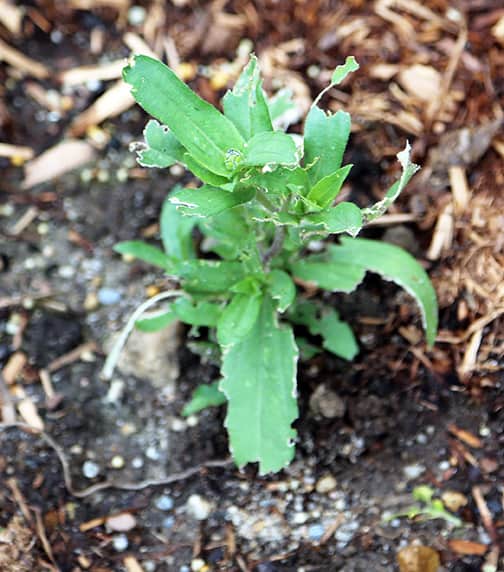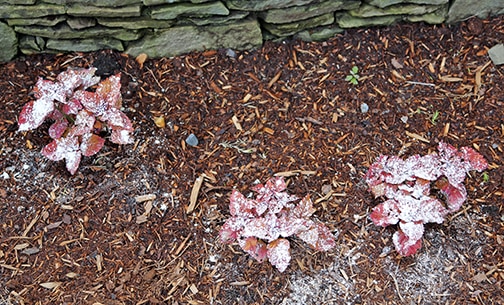A Gardening Life – June 11
See of this sounds familiar: you planted small annuals and within three days their fresh, green leaves are tattered and torn. Or the vegetable seeds you planted last week poked out of the ground only to disappear.
One day that little bean plant was poking out of the soil and the day, poof! It was gone. And those small annual zinnias and marigolds that were planted over the weekend pull a similar vanishing act. Here on Sunday, stripped to the veins or totally gone by Wednesday.
In the Northeast the culprits who cause this damage are earwigs, slugs and snails. I can tell which of these has gone after my plants by looking for the slightly shiny residue that slugs and snails leave behind. If I don’t see those slime trails, the offenders were probably earwigs.
Earwigs are the insect that people love to hate. They are creepy looking with pincers that appear much more menacing than they really are. They sneak under flowerpots and drop out of the dahlias we cut for bouquets. These creepy crawlies are most problematic early in the season because they cause substantial damage on new foliage, seedlings and flowers.
Here are the two things I’d like to convey in this post. 1. Earwigs are beneficial insects. And 2. Earwigs are pretty easy to control organically.
Later in the season earwigs will be chomping on decaying plant matter. They are one of the insects that break down organic matter and return it to the soil. Early in the summer there isn’t as much for them to eat, however, so they go after your zinnia seedlings, your butterfly bush foliage, or the emerging shoots of dahlias.
Tonight I went outside and saw signs that the earwigs were shredding some of my annuals. Out came the bag of diatomaceous earth, my favorite way to stop the early damage to annuals and vegetables caused by earwigs, slugs and snails. A quick sprinkling over and around the plants is very effective. Normally I just have to do it once.
Dear Earwigs and Slugs;
Once summer is well underway there is enough for everyone. You, Earwigs, can have my dead leaves and stems and you slugs are the perfect meal for the toads. In the meantime, however, I need to protect these tender plants with a quick dusting. I hope you understand, C.L.

Here are the Profusion Zinnias with light earwig damage.

My Sedona Coleus (one of my must-have annuals) look a bit sad here...they got some cold damage shortly after I planted them, and then the earwigs started on them. Dusting time!

For a couple of days the plants look like they were sprinkled with confectioners sugar. Later the dust disappears and I forget that it was ever there.
Sharing The Wealth
Tips for Using Diatomaceous Earth
• The skeletons of diatoms are sharp so product kills the insects and slugs by cutting into them.
• You can scatter it with your hands (I usually wear garden gloves) or with a duster, but be sure not to breath in the dust. Here are instructions for making a duster out of a plastic water bottle.
• Diatomaceous earth is most effective when it’s dry so apply it after a rain and don’t turn on the sprinklers for a couple of days. If it should happen to rain right after you put the dust down, do it again once the foliage is dry.
• I usually dust my annuals immediately after planting and the dahlia shoots as soon as they poke out of the soil. I dust bean plants once the first set of leaves open up and the squash plants as soon as they sprout. Once the plants are larger you can stop dusting.

